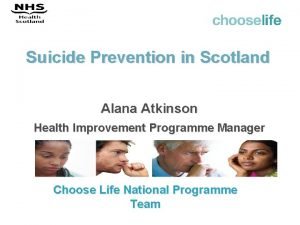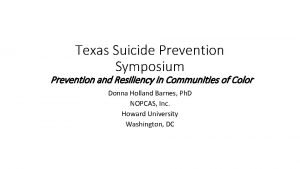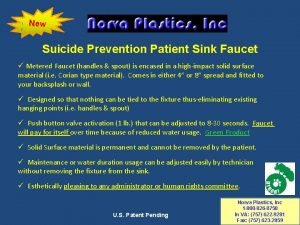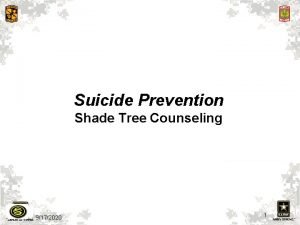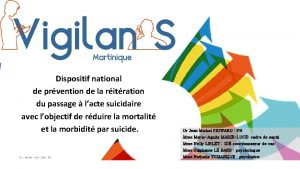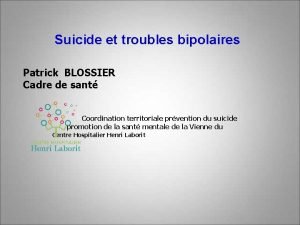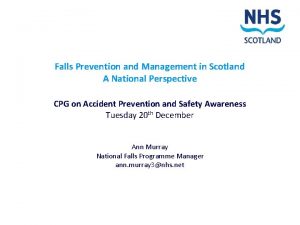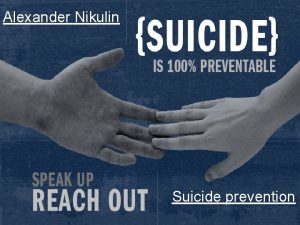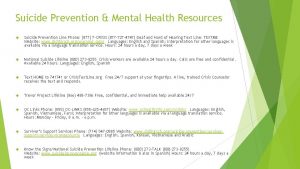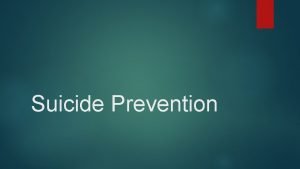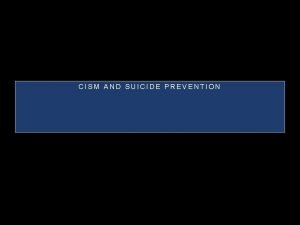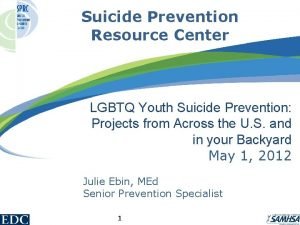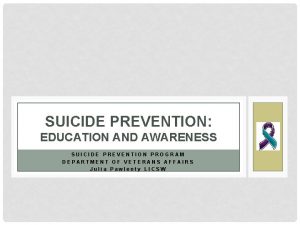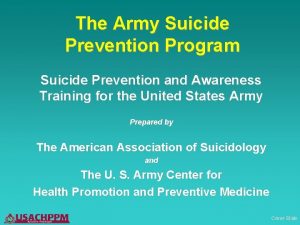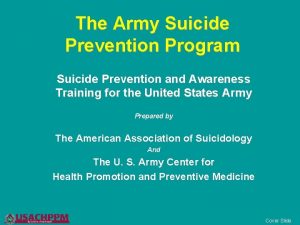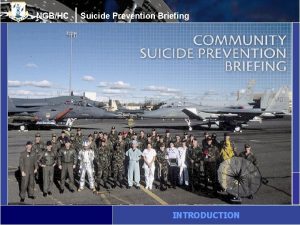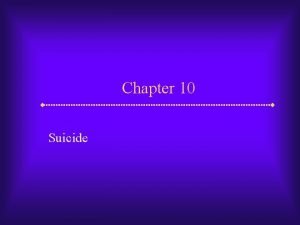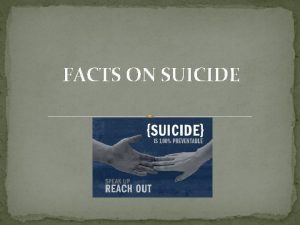Suicide Prevention in Scotland Alana Atkinson Health Improvement
















- Slides: 16

Suicide Prevention in Scotland Alana Atkinson Health Improvement Programme Manager Choose Life National Programme Team

Europe

United Kingdom

Suicide in Scotland: l Around 2 people per day die by suicide in Scotland* l 746 people died by suicide in 2009* l Scotland’s suicide rate is higher than the rates in most other European countries l Suicide remains the leading cause of mortality in those under the age of 35 years l Around 3 out of 4 suicides* are men l Those in most deprived areas of Scotland still have a suicide risk double that of the Scottish average *deaths by intentional self-harm and events of undetermined intent

Suicide over time, by age in Scotland: Males


• • Choose Life: Dedicated 10 year suicide prevention strategy (2002 -2013) Set a clear target: 20% reduction by 2013 Calls for broad based collective action and partnership working at national and local level There have been two evaluations and the outcome of these have influenced a ‘refresh’ of the strategy from 2010

Refreshed Objectives 2010 • • • Identify & intervene to reduce suicidal behaviour Develop & implement a co-ordinated approach to suicidal behaviour Ensure interventions to reduce suicidal behaviour are informed by evidence from research & evaluated appropriately Provide support to those affected by suicidal behaviour Provide education & training about suicidal behaviour & promote awareness about the help available Reduce availability & lethality of methods

High risk groups People l Experiencing mental ill health (primarily depression & bipolar disorder) l Misusing substances – especially alcohol l With co-existing mental illness & substance misuse l Who have a history of self-harm or who have attempted suicide l In psychiatric care & those recently discharged l Recently bereaved l Living in areas of socio-economic deprivation l With low socio-economic status l Who are unemployed l Who experienced life stress – especially physical and/or sexual abuse l Who are lesbian, gay, bisexual or transgender

National Support & Implementation l l l Leadership and support for local implementation Support for local areas – evaluation, guidance, network events Training Communications & media work Understanding what works – research, evaluation and sharing effective practice Partnership approach – suicide prevention is everyone’s business

Suicide Prevention Training: l Range of suicide prevention training courses now available: ASIST, Safe. TALK; Suicide TALK; STORM l 1 in 200 people now trained in suicide prevention (20, 000) l Training has raised awareness, boosted confidence and skills leading to direct interventions

Communications & Marketing l l l l Key messages i. e. 2 suicides a day in Scotland Campaign materials TV, radio and online advertising NUJ Media Guidelines – to support responsible media reporting Media volunteers (the human voice to what we do) National & local input to Suicide Prevention Week www. suicide-prevention. org. uk , campaign website Communicating consistent and coherent messages across Scotland

Don’t hide It. Talk about it.

Reporting a Suicide l l l l l Why should the story run? Mind your language Be careful how suicide rates are reported Do not be explicit Position the story Interviewing the bereaved Place the story in context Seek expert advice Include helpline contacts

Reporting suicide in the media Do: l Consider using a personal story to illustrate a point l Seek advice/comment from experts/suicide prevention l Encourage people to seek help l Include contact details of where to seek help l Use as an opportunity to educate the public

Alana Atkinson Health Improvement Programme Manager Choose Life National Programme Team l alana. atkinson@nhs. net l info@chooselife. net l www. suicide-prevention. org. uk
 Alana atkinson
Alana atkinson Primary prevention secondary prevention tertiary prevention
Primary prevention secondary prevention tertiary prevention Mad acronym suicide prevention
Mad acronym suicide prevention Chapter 5 glencoe health answers
Chapter 5 glencoe health answers Suicide chain teach
Suicide chain teach Texas suicide prevention symposium
Texas suicide prevention symposium Suicide prevention sink
Suicide prevention sink Army suicide prevention situational questions
Army suicide prevention situational questions Prévention du suicide
Prévention du suicide Suicide prevention month quotes
Suicide prevention month quotes Army suicide prevention training
Army suicide prevention training Bipolaire suicide
Bipolaire suicide Sssc falls prevention
Sssc falls prevention Alana barlow
Alana barlow De nedir
De nedir Natal brazil crime
Natal brazil crime Alana bruning
Alana bruning
